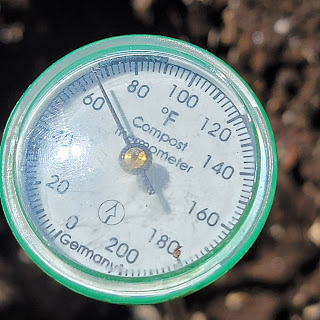In order to get the best production from your tomato plants, it’s important to understand four key elements: temperature, location, soil quality and planting depth. Tomatoes are warm weather plants, so temperature is an important factor when it comes to deciding when to plant. You’ll want to wait until the nighttime temperatures stay consistently above 50° F and the soil temperature measured at six inches below the surface is above 55° F before you plant tomatoes.
Once the temperatures moderate and your tomato plants have been hardened off sufficiently, it’s time to plant. To get the best from your tomato plants this year, pick the sunniest spot in the garden. Your tomato plants need at least 6 hours of sunlight a day; 8 hours a day is better.
Choose a spot where you didn’t grow tomatoes, potatoes, peppers or eggplant last year. Rotating your crops every year reduces the potential for diseases such as leaf spot, blight and wilt.
If you don’t have enough space to rotate your crops, consider planting tomatoes in containers this season. Plant a soil building crop such as peas and oats or winter rye where you grew tomatoes last year. Keeping the garden covered will protect the soil microbiome.
Great soil is a must for growing tomatoes, so plan to amend the site with organic material. We recommend adding 2" to 3" of Earth Essentials Sheep, Peat and Compost and digging it in to your existing soil 6" to 8". This locally produced product will work to enrich the planting site. Repeat this application again in the fall.
Once the soil is amended, it’s time to plant. In order to get the best harvest, it’s important to provide adequate space between tomato plants. Determinate tomatoes should be planted 24 to 30 inches apart. For indeterminate varieties, allow 36 inches between plants.
Tomato plants have adventitious root systems. This means that the tomato plant is capable of producing roots all along its stem. Trench-planting tomatoes places roots closer to the surface, in the soil’s warm zone. Tomato plants will develop more roots and the roots will stay warmer through the course of the growing season. Warmer, larger roots will give you more tomatoes.
Start by laying the plant on its side for a day or so. The top will curl up, making it easier to fit. Next, dig a trench about five to six inches deep and long enough to hold your tomato plant. Place your tomato plant in the trench and add enough soil to bury the stem.
When you get to the top, gently build up the soil until the top and leaves of the tomato are upright.
You may also choose to plant your tomatoes straight down. Dig a hole deep enough to accommodate one third to one half of the plant. Remove the lower leaves and place your plant in the hole, then back fill with amended soil.
Please note, if you are growing grafted tomatoes, plant straight down, keeping the graft point level with the soil line.
Add some granular tomato fertilizer such as Happy Frog Tomato and Vegetable or Natural Guard Tomato and Vegetable. The OMRI stamp on the bag assures you these products are organic. These fertilizers feed your tomatoes and they add calcium and magnesium. Plus, they contain mycorrhizae, beneficial fungi which will help your tomato roots grow bigger roots and take up nutrients more efficiently. Plan to fertilize your plants when you see fruit beginning to form and every two to three weeks through harvest.
Now that your tomato is planted, give it a good drink. Your tomato plants need to be watered deeply now and regularly through the growing season. Not watering consistently can lead to many problems including Blossom End Rot and cracking. Watering inconsistently can also cause the flowers to drop and the fruit not to set. Avoid watering your tomato plants overhead. Irrigate at the base of the plant. Starting your tomato plants out right will lead to better yields this season.










No comments:
Post a Comment